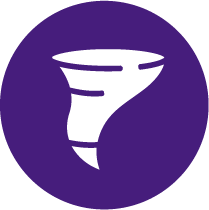Be Prepared - Emergency Procedures
Contact Information
Office of Emergency Preparedness
225-578-1919
[email protected]
Emergencies:
LSU Police
225-578-3231
Campus Crisis Information
225-578-4636
 Emergency Notifications
Emergency Notifications
In order to better communicate emergency information to the campus community, LSU has implemented the LSU Emergency Text Messaging System. The LSU Emergency Text Message System allows all subscribers to receive alerts, news, or other information via text message. Participation in the LSU Emergency Text Messaging System is strongly encouraged. There is no fee to subscribe to the system, but cellular rates for messages may apply.
Students, Faculty and Staff may subscribe to the Emergency Text Message System by following the directions below:
- Login to myLSU
- Select “Campus Community” in the left navigation bar
- Select “Emergency Text Message” from the drop down menu
- Input cellular service providers and cell phone numbers
- Choose unique passwords, which must be different from myLSU passwords
If you are not a member of the LSU Community and would like to receive notifications,
you may download the LSU Mobile App to receive these messages. You must allow the app to send push-notifications in order
to receive a copy of emergency text notifications.
The Emergency Preparedness Pocket Guide includes safety tips, resources, and additional emergency preparedness information suitable for faculty, staff, students, and patrons of LSU. If printed, the guide will fold up to roughly the size of a business card and can be kept in a wallet easily. This guide is reviewed and updated annually as needed.
LSU Emergency Preparedness Pocket Guide
 Emergency Kit
Emergency Kit
A disaster supply kit typically includes supplies for a minimum of 3 days. The kit should be customized to meet your specific needs. General guidelines to making a kit are below.
- Water – 1 gallon per day per person
- Food – store food that is considered nonperishable (food should not require refrigeration or preparation)
- Flashlight – include extra batteries
- Cell phone charger that can plug into a wall, car, USB port, or portable charger
- First-aid kit – non-prescription pain relievers, band-aids, antibacterial ointment, insect repellent, sunscreen, and other items
- Toiletries – hygiene items
- Special needs items – prescription medication, infant formula, or specific needs that you or your family have
Resources
LSU Disaster Supplies Checklist 2024
American Red Cross Supply Kit Information
 Active Shooter
Active Shooter
In the event of an active shooter:
- Call 911
- Run, if you can, to safely escape the area
- Leave your belongings behind
- Hide, if you cannot escape
- Protect yourself by locking or barricading doors, turning off lights, silencing cell phones
- Fight back as a last resort
- Do NOT open doors for anyone unless you feel it is safe to do so
- Remain in place until authorities advise
- When law enforcement arrives, keep your hands visible and follow directions
Resources
 Bomb Threat
Bomb Threat
In the event of a bomb threat:
- Report all threats to LSUPD by calling 225-578-3231 or 911
- If you see something suspicious, report it to LSUPD
- DO NOT handle suspicious objects
- Evacuate the area
What to do if you receive a bomb threat via telephone:
- Keep the caller talking as long as possible
- Ask the following questions:
- What is the identity of the caller?
- Where is the bomb located?
- When will the bomb detonate?
- What type of bomb is it?
- What does the bomb look like?
- Why was the bomb planted?
- Determine the characteristics of the caller
- Approximate age
- Gender
- Accent
- Voice characteristics (calm, nervous, excited, laughing, etc.)
- Listen for background noises
- Call LSUPD at 225-578-3231 or 911
Resources
 Chemical or Hazardous Material Release or Spill
Chemical or Hazardous Material Release or Spill
In the event of a chemical or hazardous material release or spill:
- Call 911
- Provide the type of chemical, size, and possible exposures
- Evacuate the area or building
- If you are unable to leave the area, find a safe place in the general area
- Close all windows, turn off all flames, and open hoods if it is safe to do so
- Keep others from entering the affected area
- Wait for an all-clear indication from emergency personnel before re-entering the area or building
Resources
 Extreme Heat
Extreme Heat
Extreme Heat Information:
- Extreme heat is a period of high heat and humidity with temperatures above 90 degrees that lasts as a long period (2 days or more).
- Extreme heat can occur quickly and without warning
- Older adults, children, and sick or overweight individuals are at greater risk from extreme heat
- Humidity increases the feeling of heat as measured by a heat index
In the case of extreme heat:
- Find air conditioning
- Avoid strenuous activities
- Watch for heat illness
- Wear light clothing
- Check on family members and neighbors
- Drink plenty of fluids
- Watch for heat cramps, heat exhaustion, and heat stroke
- Never leave people or pets in a closed car
Resources
 Fire
Fire
In the case of a fire:
- Evacuate immediately
- Activate nearest fire alarm
- Proceed to the nearest exit
- Use stairs, not elevators
- Assist persons with disabilities
- Meet at designated assembly area (if applicable)
- Call 911
- Re-enter only when authorized by emergency personnel
Residence Halls
On campus residence halls are equipped with fire-safety equipment, including monitored fire alarm systems, automatic fire sprinkler systems, and smoke detectors and/or heat sensors that activate the central fire alarm system.
Resources
 Flood
Flood
In the case of flooding in your building:
- Call LSU Facility Services Work Control at 225-578-3186
- Provide your name, location, and what areas are affected by the flooding
- Evacuate the area if you feel your safety is at risk, especially in the flooding is near electrical equipment
In the case of street flooding:
Do NOT drive in flooded roads ways. If you encounter a flooded roadway, turn around. The Centers for Disease Control and Prevention (CDC) reports that over half of all flood-related drownings occur when a vehicle is driven into hazardous flood water. A mere 6 inches of fast-moving flood water can knock over an adult. It takes just 12 inches of rushing water to carry away a small car, while 2 feet of rushing water can carry away most vehicles. It is NEVER safe to drive or walk into flood waters.
Resources
 Hurricane
Hurricane
As a coastal state, Louisiana faces the possible threat from hurricanes and tropical storms each June through November. These storms have the potential to cause property damage, personal injury and even death.
Louisiana State University is aware that these high intensity storms can easily create unsafe conditions in our own community.
The LSU Office of Emergency Preparedness closely monitors all tropical weather. Students, faculty, and staff are encouraged to stay tuned to local news media, look for postings on the LSU homepage and the LSU Office of Emergency Preparedness webpage, and be aware of emergency phone numbers.
Announcements concerning the canceling of classes and campus events will be posted as soon as decisions are made by the Office of Emergency Preparedness.
Hurricane Preparation List:
- Create an emergency kit that includes:
- Plenty of drinking water
- Flashlights in case of a power failure and extra batteries. Avoid open flames, such as candles and kerosene lamps, as a source of light
- First aid kit
- Battery operated radio or TV
- Canned and dry food. Have snack food items, such as crackers, cookies, peanuts, etc. Do not cook with charcoal or flame as poisonous fumes are released and could be lethal in a confined area
- Manual can opener
- Fill tank of car with gasoline
- Keep pets inside or protected
- Secure loose outside objects
Information for Students:
Students should contact their parents or family member prior to the storm to advise them of their location and then again after the storm to inform them of their status.
Campus residents from the Baton Rouge area who want to go to their homes may do so. Please inform your RA or someone at the reception desk of your dorm or apartment so your whereabouts are known.
Before a storm:
Students unable to travel or those who choose to stay in campus housing should review
the “Hurricane Preparation List” at the top of this page.
During a storm:
Residents are reminded to stay tuned to local radio, television, and the LSU Website
for updated information.
- Students should remain away from dangerous areas, such as the glass windows and doors in the lobby areas of the residence halls or the living rooms of apartments.
- Do not attempt to go outside.
- During a storm a “state of emergency” exists. Alcoholic beverages or other substances that impair judgment are prohibited.
Resources
 Medical Emergency
Medical Emergency
In the case of a medical emergency:
- Call 911
- Provide name, location, and type of emergency
- Stay on the phone for instructions
- Do not move the victim unless he or she is in danger
- Have someone ready and waiting for first responders outside the building
 Pet Planning
Pet Planning
Pets must also be planned for during a disaster. A backup plan should be developed that includes people you can rely on to take care of or pet or evacuate or pet if you are unable to. Pet owners should create a pet supply emergency kit.
Pet Supply Kit:
- At least a 3-day supply of food
- At least 3-days of water specifically for pet
- Important documents - registration, vaccination records, etc.
- Collar, leash, and harness with ID tag, rabies tag
- Crate or pet carrier
- Sanitation items – litter, plastic trash bags, etc.
- Familiar items – toys, blankets
- Picture of you and your pet together – if you become separated, this will help with proof of ownership
Helpful Tips:
- Have a backup contact to get your pet from your home in case you are not able to
- Identify pet friendly hotels
- Have your pet microchipped
Resources
 Severe Weather/ Tornado
Severe Weather/ Tornado
In the case of severe weather or a tornado:
- Seek shelter
- Monitor local weather
- Shelter on the lowest level of the building
- Do not pull the fire alarm
- Stay away from the windows
- Move into interior hallways
- If outdoors, seek shelter in a ditch or low-lying area
- Wait for notification that it is safe to return to normal operations
Resources
 Shelter in Place
Shelter in Place
In the case of a shelter in place notification:
- Stay in the building, close and lock windows and doors
- Move into an interior room away from windows
- Do not use elevators
- Wait for notification that it is safe to return to normal operations


